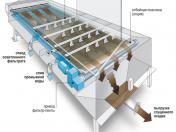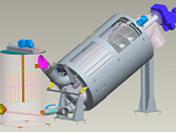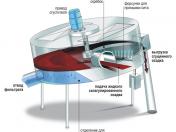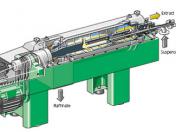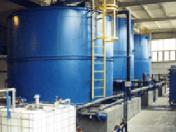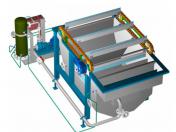Sludge Thickeners
Thickening is the process of increasing the concentration of dry matter in the sediment by removing a portion of the liquid fraction. When compacted, different kinds of wastewater sludge are separated into a more concentrated sediment with a high dry matter content and a supernatant liquid with a relatively low concentration of suspended solids. As a result of thickening, the volume of sediment decreases, operation improves, and the costs for subsequent storage, handling, transportation, deployment and use decrease.
The concentration of suspended solids in different types of sediments (primary sediment, biofilter film, biological sludge, etc.) or their mixtures varies greatly depending on the characteristics of the sediments, methods for their removal from sedimentation tanks, pump characteristics and operating methods.
Principle of the sludge thickener operation
Most thickeners separate liquid and solids by coagulation and flocculation, followed by pressurized drainage of water through a porous medium. The porous medium can be made of wedge shaped rods, perforated media, polyester fabrics or fabrics made from a combination of polymer and stainless threads. The water released by coagulation under pressure seeps through the cellular structure of the porous medium, and the thickened phase remains on the filter element. The filtration pressure can be created by means of gravity forces, or by a rotating screw.
Scope of the thickener application
- sediments of primary sedimentation tanks (primary sediment, mixture of primary sediment with biological sludge or biofilm, primary sediment with additive of phosphorus removal agents, floating (foam) product);
- sediments of secondary sedimentation tanks and biofilm from biofilters;
- sediments of anaerobic and aerobic digestion tanks (primary sediment, mixture of primary sediment with biological sludge or biofilm from biofilters);
- sediment of water pretreatment plants.
Sludge thickening equipment
- Belt thickener.
- Screw thickener.
- Disc thickener.
- Centrifuge.
- Gravity thickener.
The use of sludge thickeners is advisable at most wastewater treatment plants. However, both the sediments themselves and the thickening characteristics are unique for each station, and when designing, especially when re-engineering the structures, it is necessary to evaluate the options for compaction technology, including gravity, centrifugal thickening, and thickening on filter elements. All these technologies vary in performance criteria, such as: the achieved concentration of dry matter and supernatant liquid, odors, energy consumption, requirements for laboratory tests, sensitivity to changing temperatures, and characteristics of dry matter. In addition, it is desirable to conduct experimental tests before project development (for operating stations).


